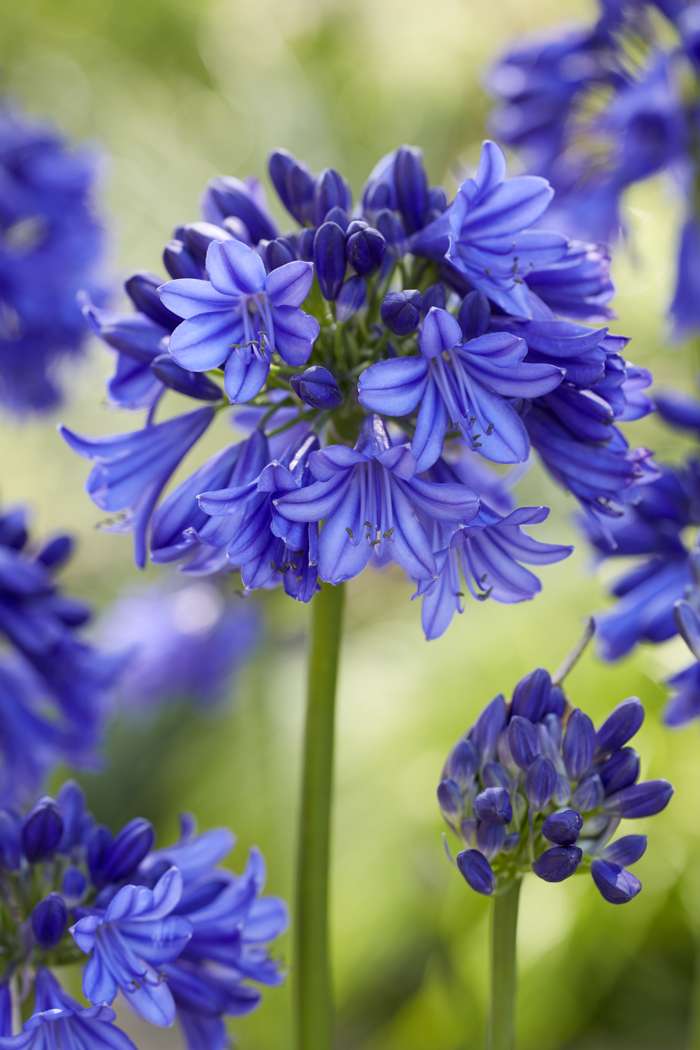Seasonal Agapanthus Care: Preparing for Winter and Summer season
Seasonal Agapanthus Care: Preparing for Winter and Summer season
Blog Article
Understanding the Art of Agapanthus Care: Important Actions for Healthy And Balanced Growth and Vibrant Blossoms
In the world of cultivation, the growing of agapanthus stands as a rewarding endeavor for those who look for to support these classy flowering plants. With their striking blossoms and stylish foliage, agapanthus has caught the interest of garden enthusiasts worldwide. However, attaining optimum development and lively blossoms calls for a nuanced approach that incorporates different essential steps. From picking the ideal variety to mastering pruning methods, the trip towards cultivating growing agapanthus plants is diverse and holds the vital to unlocking the complete potential of these herb treasures.

Choosing the Right Agapanthus Selection

When choosing the ideal Agapanthus selection for your garden, consider variables such as environment viability, flower color, and development practice. Additionally, take into consideration the climate in your region to make sure the Agapanthus selection you choose can flourish in your details problems. Recognizing the development habit of different Agapanthus ranges is critical for appropriate positioning within your garden.
Suitable Planting Problems
Considering the ideal environmental needs is essential for successful Agapanthus cultivation. Agapanthus thrives in well-draining dirt with a slightly acidic to neutral pH level. When planting, select a location that obtains full sunlight to partial color. In hotter climates, providing some afternoon shade can avoid scorching of the fallen leaves. Agapanthus plants are delicate to chilly temperature levels and should be protected from frost during cold weather.
To make sure healthy and balanced development and vibrant blossoms, plant Agapanthus bulbs at a deepness of about 2-4 inches and room them 8-12 inches apart. Including organic matter, such as garden compost, to the soil can improve drainage and fertility, promoting robust root advancement. Mulching around the base of the plants assists retain dampness and reduces weed development. Normal watering is crucial, specifically during the expanding season, to maintain the dirt consistently wet but not soaked.
Watering and Fertilizing Tips
Maintaining proper wetness degrees and supplying essential nutrients are vital elements in the care regimen for Agapanthus plants. When it comes to watering Agapanthus, it is important to strike an equilibrium. These plants like constantly wet dirt but are vulnerable to root rot if overwatered.
Fertilizing Agapanthus is essential for advertising healthy growth and prolific flowers. Apply a well balanced plant food, such as a 10-10-10 formula, in the early springtime as new development emerges. Repeat this application every 6-8 weeks throughout the expanding period. Prevent excessive fertilizing, as it can lead to rich vegetation at the cost of blooms. Constantly follow the manufacturer's instructions for appropriate dilution and application techniques. By following these watering and fertilizing pointers, you can guarantee your Agapanthus plants grow and create lively, resilient flowers.
Trimming Techniques for Agapanthus
Pruning Agapanthus plants at the appropriate times and with correct methods is critical for maintaining their wellness and promoting ideal growth and flowering. The optimal time to trim Agapanthus is in late winter months or very early spring before brand-new growth arises.
For flowered stems, wait till the flowers have actually perished and content then cut them back to the base. This not only cleans the plant's appearance but additionally urges the growth of brand-new flower buds. Deadheading invested blossoms can likewise redirect the plant's power right into producing even more flowers rather than establishing seeds. However, if you desire to gather seeds for breeding, leave some flowers to mature and completely dry on the plant.
Remember to use clean, sharp tools to make specific cuts and minimize the risk of presenting diseases. Agapanthus. Routine review pruning will certainly assist keep your Agapanthus looking neat and healthy while guaranteeing an abundant display screen of lovely flowers
Taking Care Of Common Insects and Conditions
After making sure appropriate trimming strategies for Agapanthus, it is important to attend to usual insects and conditions that can influence the wellness and vitality of these plants. Agapanthus plants are typically sturdy but can still fall sufferer to certain concerns. One common insect that affects Agapanthus is the Agapanthus gall midge. This little, orange fly lays its eggs in the vegetation, causing distorted Click Here growth and blossom buds that stop working to open up. To battle this bug, prune and ruin any kind of damaged plant parts and think about utilizing insecticidal soap.
Furthermore, Agapanthus plants can endure from root rot if they are planted in improperly draining soil. By being attentive and taking punctual activity against illness and pests, you can help your Agapanthus plants prosper and produce dynamic flowers. Agapanthus.

Conclusion
Finally, mastering the art of agapanthus care entails selecting the best variety, giving excellent planting problems, proper watering and fertilizing, proper pruning strategies, and dealing with common bugs and diseases. By following these necessary steps, you can ensure healthy growth and dynamic blooms for your agapanthus plants. Bear in mind to on a regular basis keep track of and keep your plants to promote their total health and long life.
To ensure healthy and balanced growth and vivid blossoms, plant Agapanthus bulbs at a deepness of concerning 2-4 inches and area them 8-12 inches apart. By complying with these watering and fertilizing suggestions, you can guarantee your Agapanthus plants thrive and generate vibrant, durable flowers.
One typical insect that impacts Agapanthus is the Agapanthus gall midge. In addition, Agapanthus plants can endure from origin rot if they are planted in improperly draining dirt. By adhering to these essential actions, you can ensure healthy and balanced growth and vibrant blossoms for your agapanthus plants.
Report this page